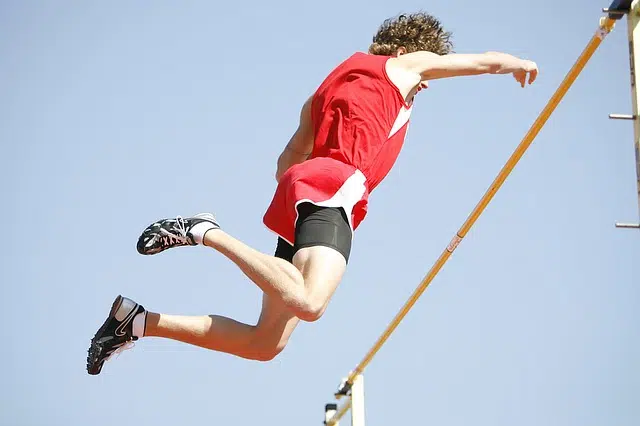
The "pole vault", one of the most notable Olympic challenges
A pole is a rod . Depending on the context, the term can be used to refer to different objects.
Different types of rods
The first meaning mentioned by the Royal Spanish Academy ( RAE ) in its dictionary refers to the stake that has an iron with a harpoon to prevent its detachment. In the field of livestock and bullfighting , the garrocha is a kind of riding crop .
In the rural setting, the pole has an extension of four meters and has a sharp steel tip called puya . In the field this rod is handled by a person on horseback and is used to bite and harass the cattle, contributing to their driving.
The rider who uses the pole is known as a garrochista . Many times the garrochistas are in charge of guiding and driving the wild cattle .
For bullfighting
According to the bullfighting regulations of Spain , the pole used to bite the bulls cannot measure more than 2.70 meters, including the puya . This criterion applies to all bullrings located in Spanish territory.
The pole vault , on the other hand, is an action that the bullfighter performs when he leans on the pole and passes over the bull . This practice is no longer common.
in athletics
In athletics , finally, the pole vault is the main element for the development of the discipline known as pole vault (or pole vault ), which is an Olympic sport . Currently, poles are made with fiberglass in their central sector and carbon fiber at their ends, although until the 1960s they were made of bamboo.
The goal of this jump is to go over a crossbar that is located at a great height. The athlete must use the pole, whose length averages 4.5 meters, to propel himself up and forward after running. The pole must be held at one end, leaving a few centimeters free, and nailed into a metal box 20 centimeters deep that is placed on the ground.
La Garrocha
As its proper name, it is a region of Spain that is located in the Catalan province of Gerona, in the northeast of the region. It is divided into the so-called Alta and Baja Garrocha. In the natural space of the first, we can find high cliffs and stone walls that surround deep and narrow valleys . Baja, on the other hand, has flat valleys due to the activity of the volcanoes, and has a humid and mild climate.

The term "garrocha" gives its name to various types of poles
Given the recently exposed characteristics of the Baja Garrocha in contrast to those of the Alta, it is not difficult to understand that the populations of the former are the most developed in the entire region. One of the main points of La Garrocha is its Volcanic Zone natural park , whose importance is considerable on a continental level. They declared it a Natural Site of National Interest in 1982. Its area reaches 12 thousand hectares and it has about forty volcanic cones.
The territory in which it is located is mid-mountain, and in its relief we find a range of altitudes that goes from 200 to 1100 meters, in Castellfullit de la Roca and Puigsallança , respectively. La Garrocha stands out for the diversity of its flora and fauna, which makes it a fundamental exponent of Iberian nature. But it also has vegetation typical of central Europe or the Atlantic, thanks to the peculiarity of its characteristics, such as its high rainfall rate and its varied substrates.
